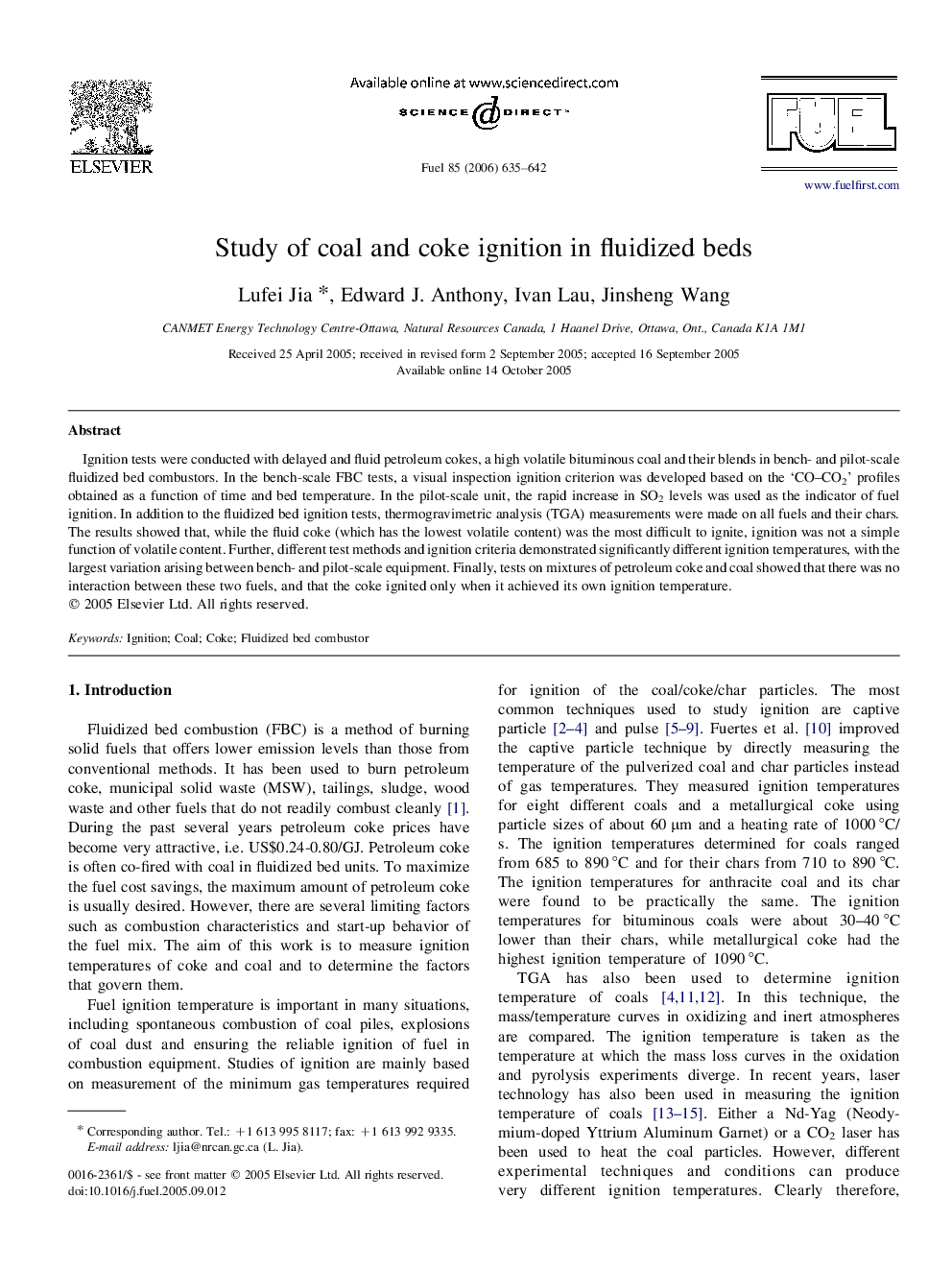| Article ID | Journal | Published Year | Pages | File Type |
|---|---|---|---|---|
| 208759 | Fuel | 2006 | 8 Pages |
Ignition tests were conducted with delayed and fluid petroleum cokes, a high volatile bituminous coal and their blends in bench- and pilot-scale fluidized bed combustors. In the bench-scale FBC tests, a visual inspection ignition criterion was developed based on the ‘CO–CO2’ profiles obtained as a function of time and bed temperature. In the pilot-scale unit, the rapid increase in SO2 levels was used as the indicator of fuel ignition. In addition to the fluidized bed ignition tests, thermogravimetric analysis (TGA) measurements were made on all fuels and their chars. The results showed that, while the fluid coke (which has the lowest volatile content) was the most difficult to ignite, ignition was not a simple function of volatile content. Further, different test methods and ignition criteria demonstrated significantly different ignition temperatures, with the largest variation arising between bench- and pilot-scale equipment. Finally, tests on mixtures of petroleum coke and coal showed that there was no interaction between these two fuels, and that the coke ignited only when it achieved its own ignition temperature.
